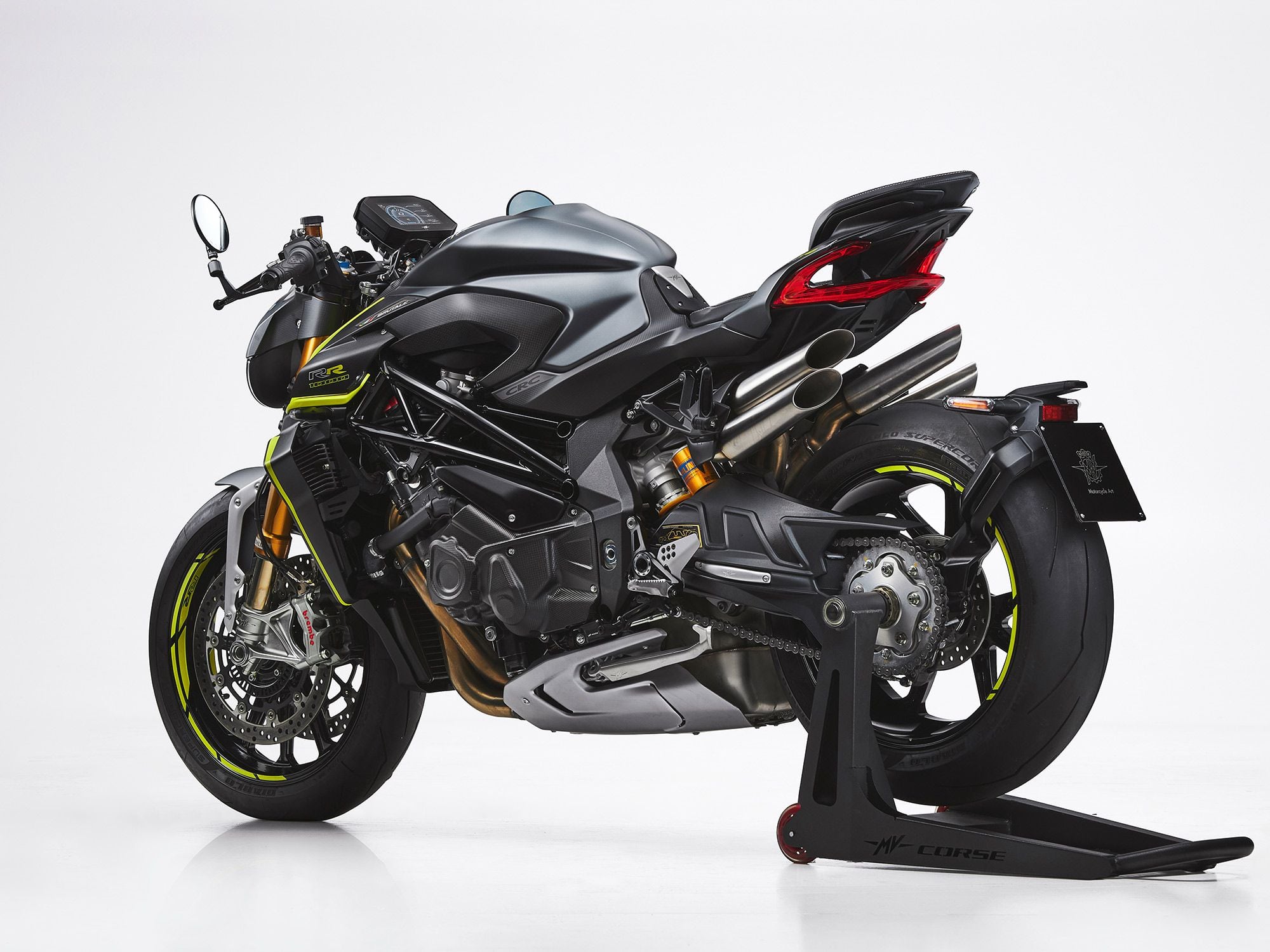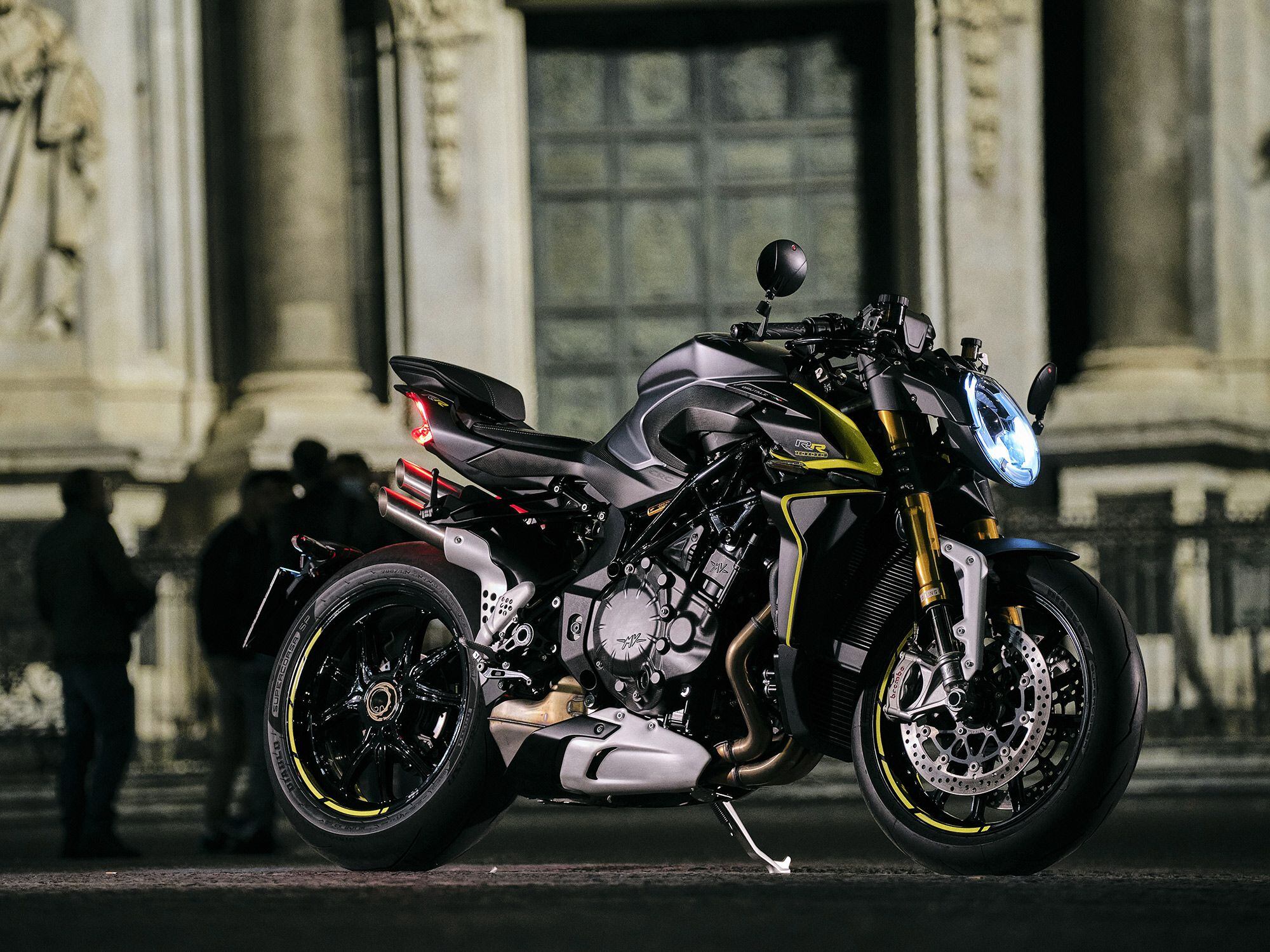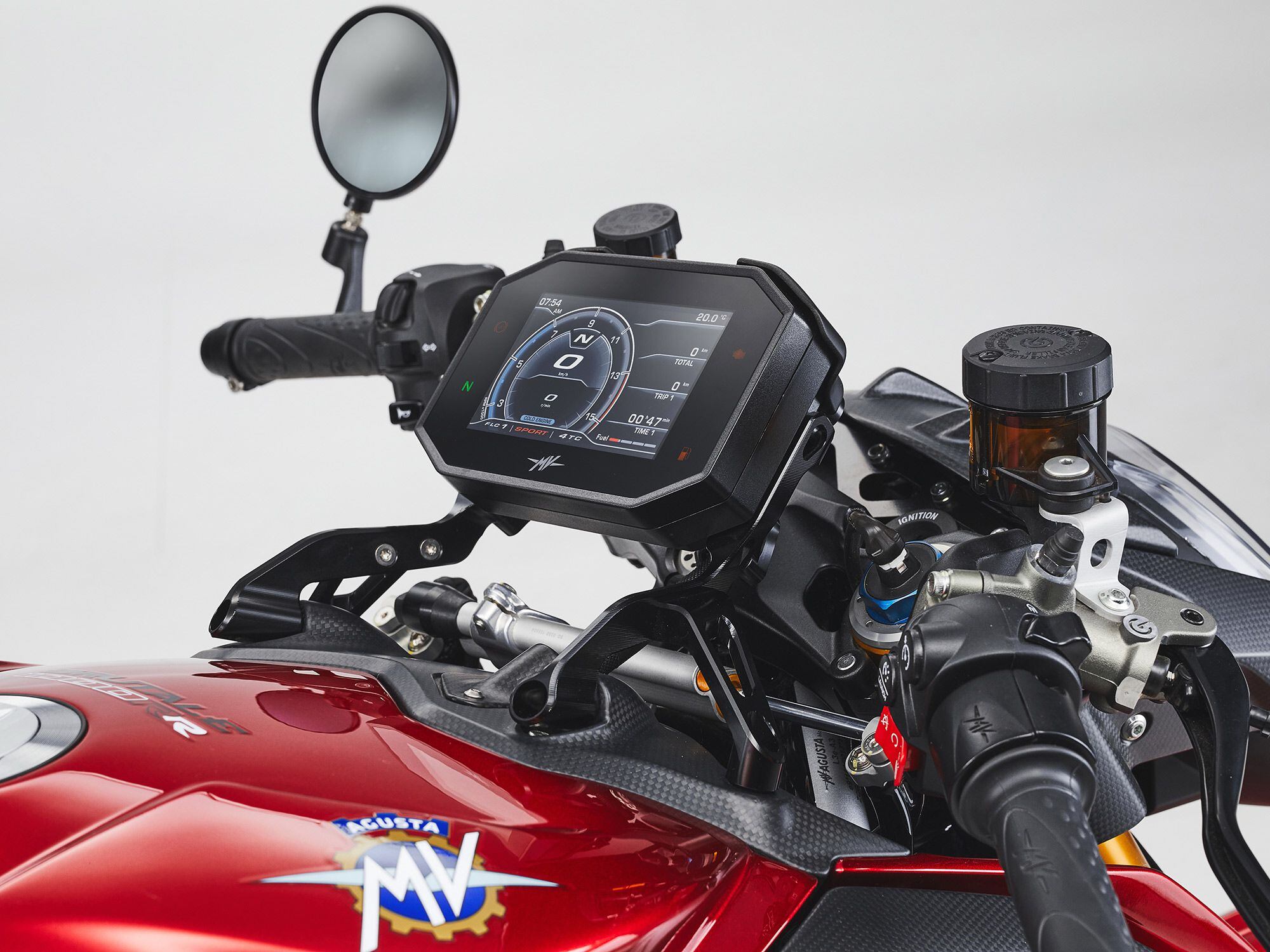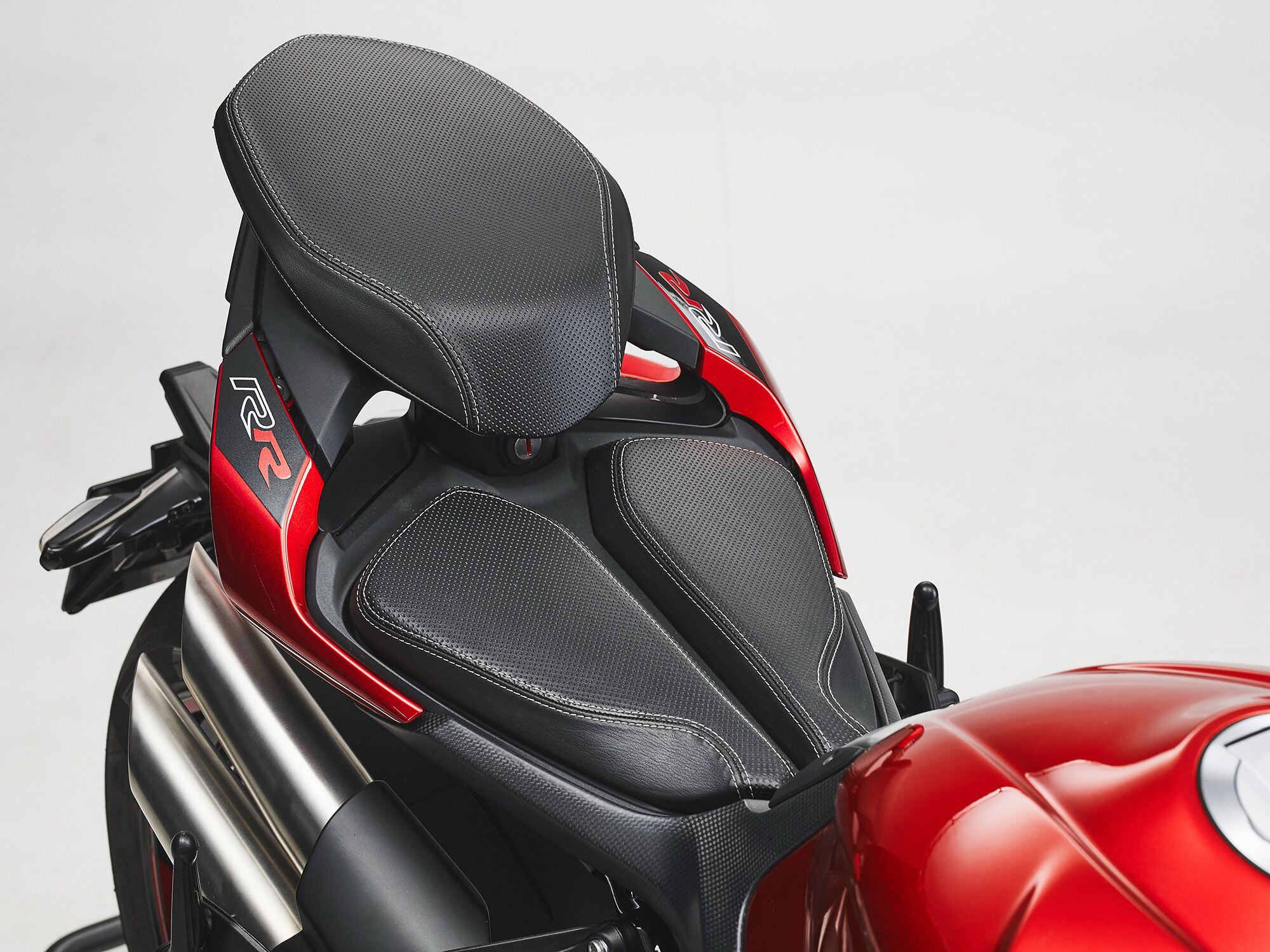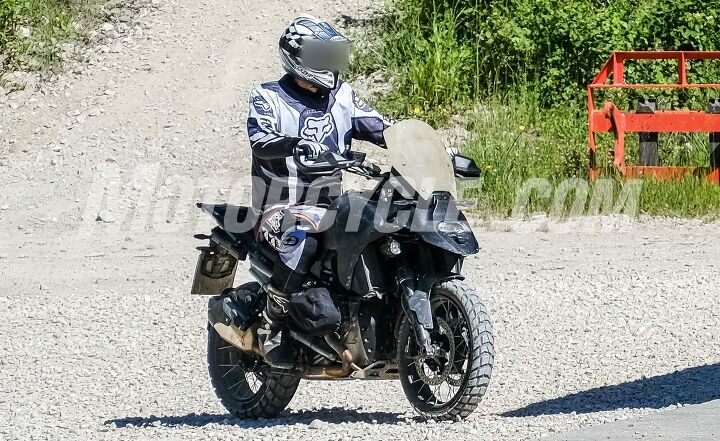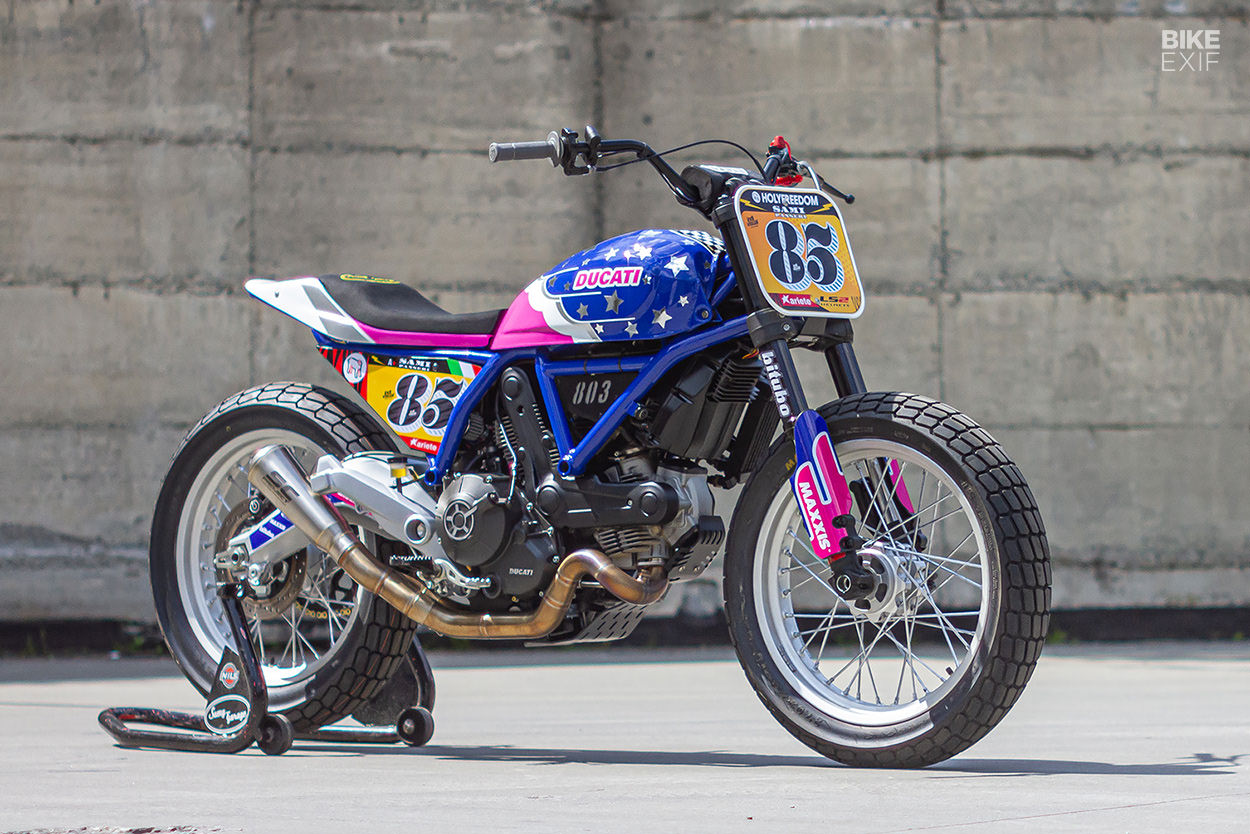You want to make a statement? MV’s new Brutale 1000 RR stands out in any lineup. Check out the four exhaust pipes and the dense overall packaging. (MV Agusta/)
In the last few weeks, press releases from MV Agusta have been rolling out like an endless batch of Formaggella del Luinese, the traditional Italian cheese made within a stone’s throw of MV’s Varese headquarters. And the latest news? MV Agusta’s newest version of the Brutale 1000 RR.
Totally redesigned in 2019, the Brutale 1000 RR is yet another sign that MV is back on track. Cycle World got a glimpse in October of last year, and the bike showcased some major improvements over the previous generation and MV’s F4 superbike. With so many changes so recently, we expected the 2021 edition would only feature updated graphics. Not so. The latest Brutale 1000 RR sports meaningful hardware and electronic upgrades that offer superior safety and performance, and which also stay ahead of the continuously tightening emission norms.
The Brutale is a daring machine—in its performance, and its appearance. (MV Agusta/)
MV’s engineering team took all the evolutionary improvements from their three-cylinder models and applied them to the Brutale 1000 RR as well. (The special-edition MV Agusta Rush also got these upgrades; see Cycle World’s recent First Look for more on that model.)
Less Friction, Less Reciprocating Mass
The key to this latest technical evolution centers around two goals: the obsessive reduction of frictional losses, and the complementary reduction of alternating inertias. In plain language, low-friction components include sintered valve guides, DLC-treated cam followers, and low-friction/high-capacity crankshaft bearings, cutting internal losses by close to 5 percent. This is about more than just power—the changes also pay dividends in terms of fuel consumption and lowering emissions. They increase reliability too: The 998cc four-cylinder engine (79mm bore, 50.9mm stroke) spins up past 13,000 rpm. The new DLC-treated inverted-cup cam followers produced a unique critical advantage—remember, this engine uses radially displaced valves requiring conical cam profiles and contact areas.
About those valves: They’re titanium, and so are the engine’s connecting rods. This brings us to the second part of the Brutale’s internal improvements—reducing reciprocating-mass inertia wherever possible. The benefits here include better reliability and reduced vibration, especially at high rpm. New cam timing fattens the torque curve, especially in the midrange, and the Brutale can now ditch the variable-height throttle bodies MV fit earlier. (The new Brutale features 50mm Mikuni throttle bodies with two injectors per cylinder.) Peak torque is confirmed at a very substantial 86 pound-feet at 11,000 rpm, with a 208 hp peak at 13,000 rpm. Compression ratio is a stout 13.4:1. The 4-into-1-into-4 exhaust manifold is new, and so is the Brutale’s high-capacity catalytic converter, making the bike fully Euro 5 compliant with a margin to spare.
The transmission gets upgrades for durability and more precise shifting as well, and includes a stronger clutch. The electronically assisted gearbox features a new sensor that makes shifting very fast, precise, and neat.
All the cockpit information you need, in a minimalist package. The Brutale stays true to its naked-bike design, yet never looks stripped down. (MV Agusta/)
The Brutale 1000 RR’s chassis didn’t need much improvement, and there are no big changes here. The frame features the typical combination of a steel-tube trellis structure integrating with massive aluminum plates that bolt up to the rear engine mounts and locate the single-side cast-aluminum swingarm’s pivot. Wheelbase is a compact 56.3 inches, and the steering geometry is race-inspired for sure: a steep 23.5 degrees, 30mm of offset, and 3.9 inches of trail with the customary 120/70-17 front tire. Pirelli Diablo Supercorsas are fit front and rear.
Better Brakes, Better Suspension, Better Electronics
While the frame is unchanged, the suspension does feature some upgrades. The 43mm male-slider Öhlins NIX EC fork and EC TTX shock absorber both feature full electronic management. The brakes are top-notch too: The all-Brembo system uses twin 320mm rotors up front with Stylema four-piston calipers and a 220mm rear rotor teamed with a two-piston caliper.
The Brutale’s seat has to be one of the most interesting we’ve ever seen on a production bike. Will it be brutal for a passenger? Only a proper road test will give that answer. (MV Agusta/)
Continental’s latest MK 100 ABS manages those brakes, and features cornering modulation and rear-wheel lift mitigation. A new six-axis IMU and a full suite of electronic rider aids (traction control, wheelie control, cruise control) helps fully exploit the Brutale’s potential. The new 5.5-inch instrument screen also lets you use the MV Ride app on your smartphone to adjust personal settings, connect with other riders, and display maps on the navigation system.
The Brutale has always been MV’s aptly named entry into what the company calls the extreme hypernaked class. Now, more than ever, it offers brutal performance in a refined package. It’s a much anticipated turnaround from a few years ago, and one any fan of high-performance motorcycles should be happy to see.


